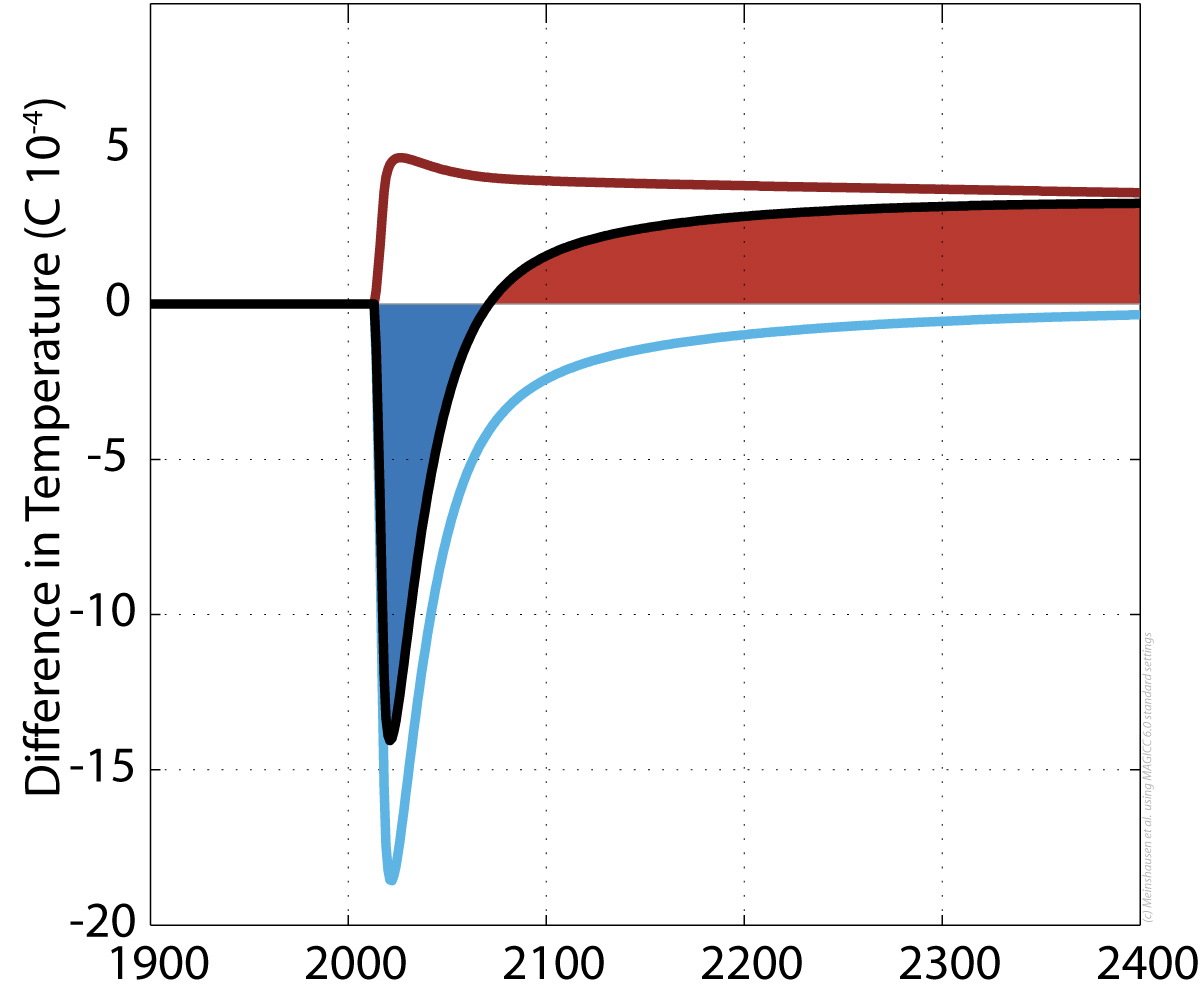Why using 20-year Global Warming Potentials (GWPs) for emission targets are a very bad idea for climate policy
Authors
Share

There have been proposals for the UNFCCC to adopt a dual-term greenhouse gas accounting standard: 20-year GWPs alongside the presently accepted 100-year GWPs. It is argued that the advantage of such a change would be to more rapidly reduce short term warming and buy time for CO2 reductions. However, these changes would be counterproductive and the benefits are overstated. The balance of near-term cooling followed by long-term warming would be even worse for 20-year GWPs, because this would “allow” dodging even more CO2 reductions for every unit amount of reduced short-lived greenhouse gas.
Issue
There have been proposals for the UNFCCC to adopt a dual-term greenhouse gas accounting standard: 20-year GWPs alongside the presently accepted 100-year GWPs. Because countries set emission goals under a ‘basket of gases’ approach, where the physical emissions of GHGs are weighted by GWPs, shifting GHG reduction goals to be set under 20- year GWPs increases the weighting of short-lived gases in any target. This would have the consequence of significantly increasing the reductions of gases like methane (CH4), or HFC- 134a, compared to CO2 and other long lived GHGs. It is argued that the advantage of such a change would be to more rapidly reduce short term warming and buy time for CO2 reductions. We show that these changes would be counterproductive and the benefits overstated.
Assessment
- 20-year GWPs attach more weight to short-lived greenhouse gases, such as methane and some HFCs, which only stay in the atmosphere from less than a year up to a couple of decades, as opposed to CO2, which stays in the atmosphere hundreds of years and continues to cause warming
- Within a basket of gases approach, differentially reducing emissions from short- lived gases more than CO2 may reduce the rate of warming for several years, but the relative cooling effect will diminish in time and be massively outweighed by the additional warming over subsequent decades and centuries caused by the relatively higher concentrations of CO2 and other long lived GHG emissions.
- As a consequence, introducing 20-year GWPs in reporting or accounting would likely give countries a perverse incentive to refrain from the deep reductions of CO2 emissions that already have been delayed for far too long.
- This would result in higher CO2 concentrations and ocean acidification than would otherwise be the case.
- Given the ultimate objective of the Convention in its Article 2 to “prevent dangerous interference in the climate system” moving to an accounting framework that reduces mitigation focus on CO2, and as a consequence adds to long term warming and ocean acidification commitments compared to the present 100 year GWP approach, does not seem well justified.
- If the focus shifts to reducing short-lived greenhouse gases, we shift the burden of increased climate impacts and damages more and more to future generations and would ultimately increase the need to negative CO2 emissions technology deployment.
Background
Global Warming Potentials play a central role in all emissions accounting and reporting systems associated with the UNFCCC. GWPs are used to weigh the benefits of reducing one gas against reducing another gas, often to compare the benefits with the costs of each option. In other words, the GWPs help in decisions to reduce one greenhouse gas instead of another.
The 100-year GWPs that are currently used, measure the warming effects of greenhouse gases over a time period of 100 years following the time of emission. The 100-year GWPs already strike a compromise between short-lived and long-lived gases, because each tonne of CO2 emissions will exert its warming effects over many hundreds of years, while for example methane does this only for a few decades.
Shortening the currently balanced time frame of GWPs, by using 20-year GWPs measuring the warming effects over a time period of 20 years, would attach more weight to short-lived greenhouse gases.
Under the current “compromise” of 100-year GWPs, a high weight to short-lived greenhouse gases is already a problem (see figures next page). This problem would be greatly exacerbated if 20-year GWPs were applied, because this gives a yet higher weight to short- lived gases and would allow an even larger amount of CO2 and other long-lived GHGs to NOT be reduced.
Extremely deep and early reductions in methane, in the absence of reductions in CO2 and other GHGs, lead to a reduction of warming rates by 25-40% between 2030 and 2050. Larger warming rate reductions of 50% and more over the same time period are projected to occur due to CO2 reductions consistent with implementation of below-2°C pathways. This includes some “automatic” reductions in methane, as a co-benefit from reducing CO2, like eliminating fugitive emissions in the supply chain of coal, oil and natural gas that will occur as these fuel sources are phased out.
For the peaking level of warming, and for limiting long-term temperature increase in general, there is no difference if reductions in methane and other short-lived GHGs are achieved now, or with a delay of several decades, while every year of delaying CO2 reductions commits to further warming for centuries.
If emissions of a short-lived greenhouse gas are reduced, this will reduce warming for several decades (blue line). The cooling effect diminishes in time, because the emissions would have been removed naturally after a few decades anyway, which is the reason why such gases are called short-lived.

If that short-lived greenhouse gas reduction is achieved INSTEAD of reducing an amount of CO2, equal in terms of 100-year GWP-weighted emissions, this missed opportunity to reduce CO2 will raise temperatures for many hundreds of years (red line).

Looking at the net effect of this GWP-weighted displacement, the warming due to the failure to reduce CO2 is smaller in the first few decades, compared to the near-term cooling from reducing the short-lived greenhouse gas, which leads to a net cooling in the near term (blue shaded area). However, this period is followed by a virtually indefinite net warming for centuries due to CO2 (red-shaded area).

The balance of near-term cooling followed by long-term warming would be even worse for 20-year GWPs, because this would “allow” dodging even more CO2 reductions for every unit amount of reduced short-lived greenhouse gas.











